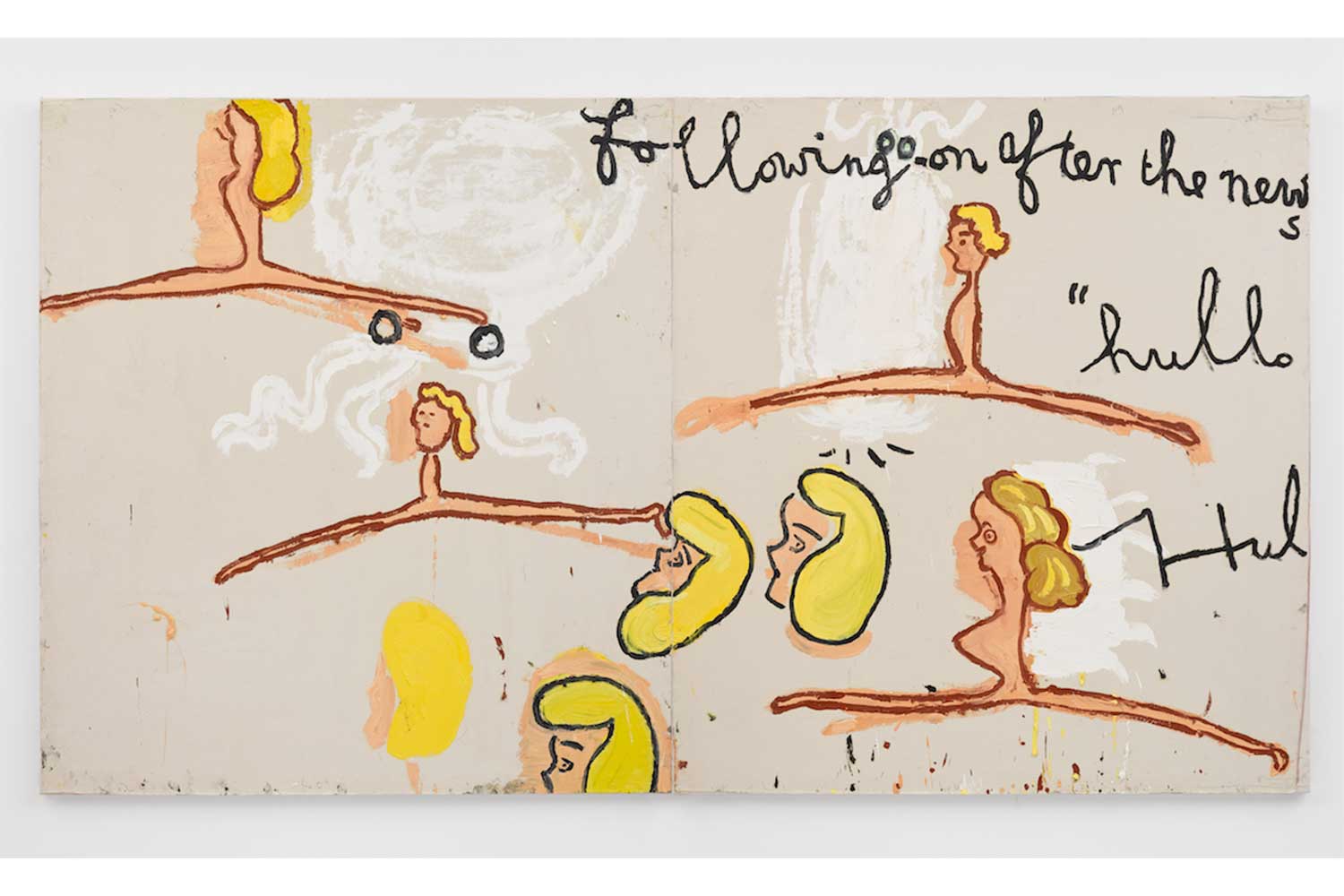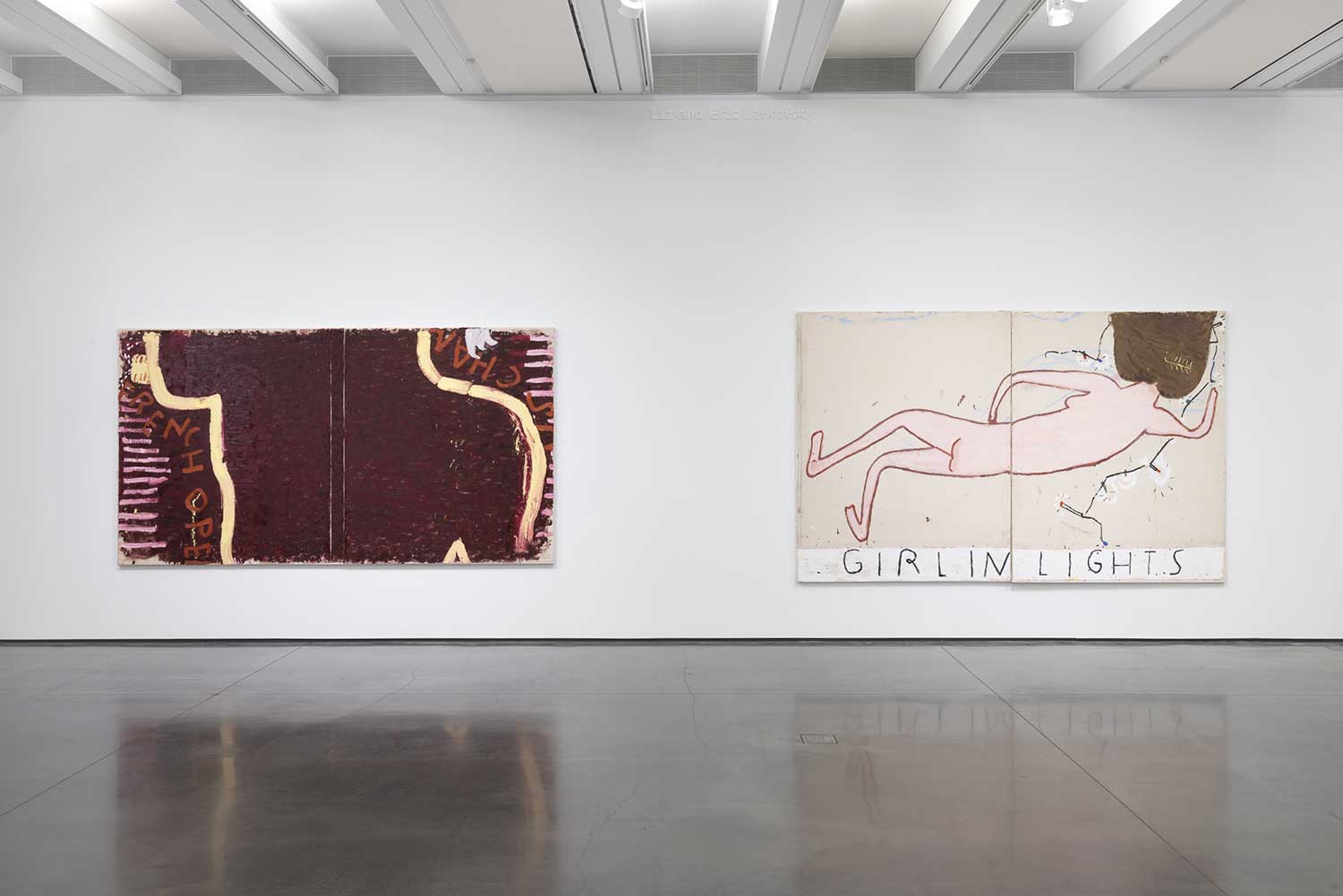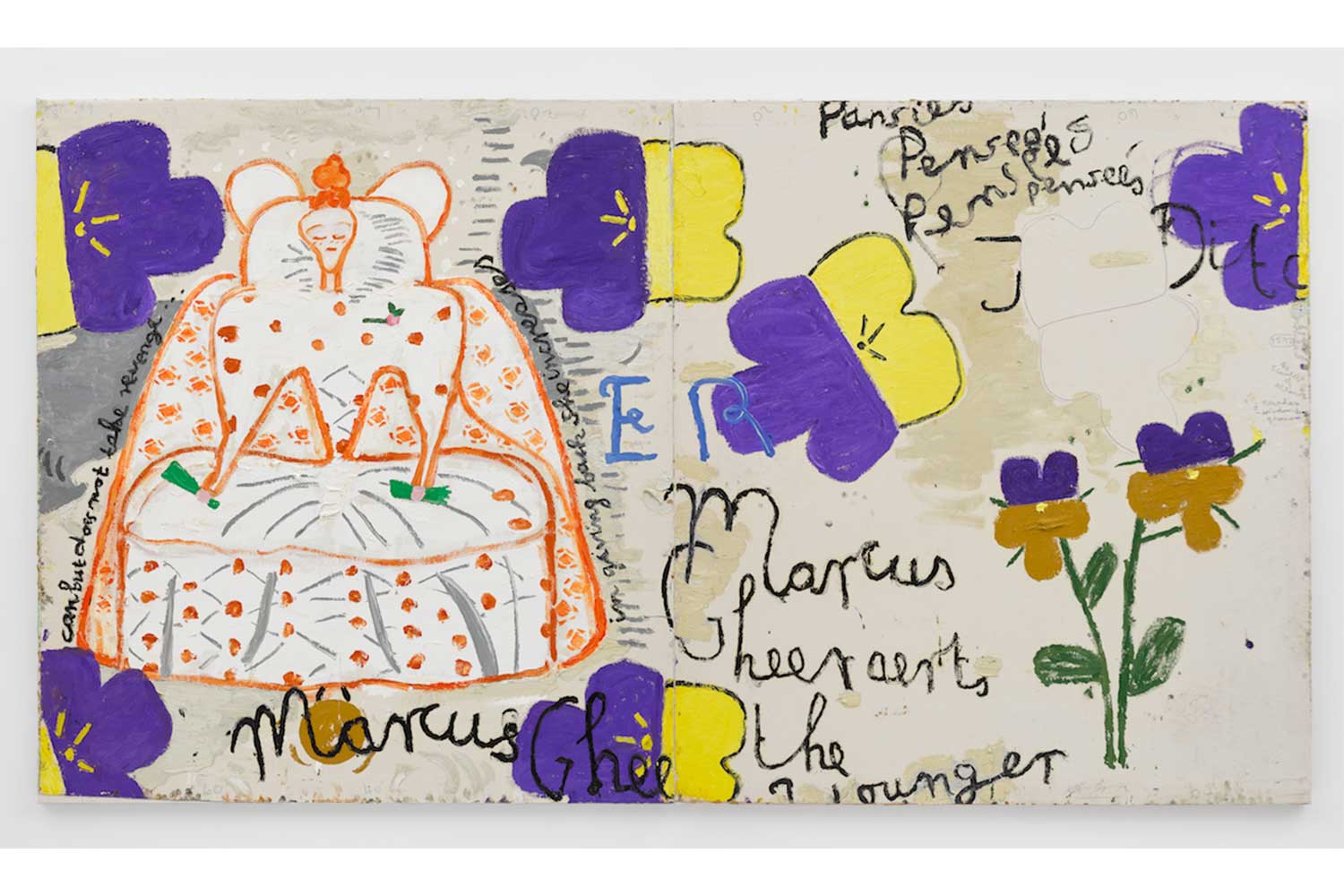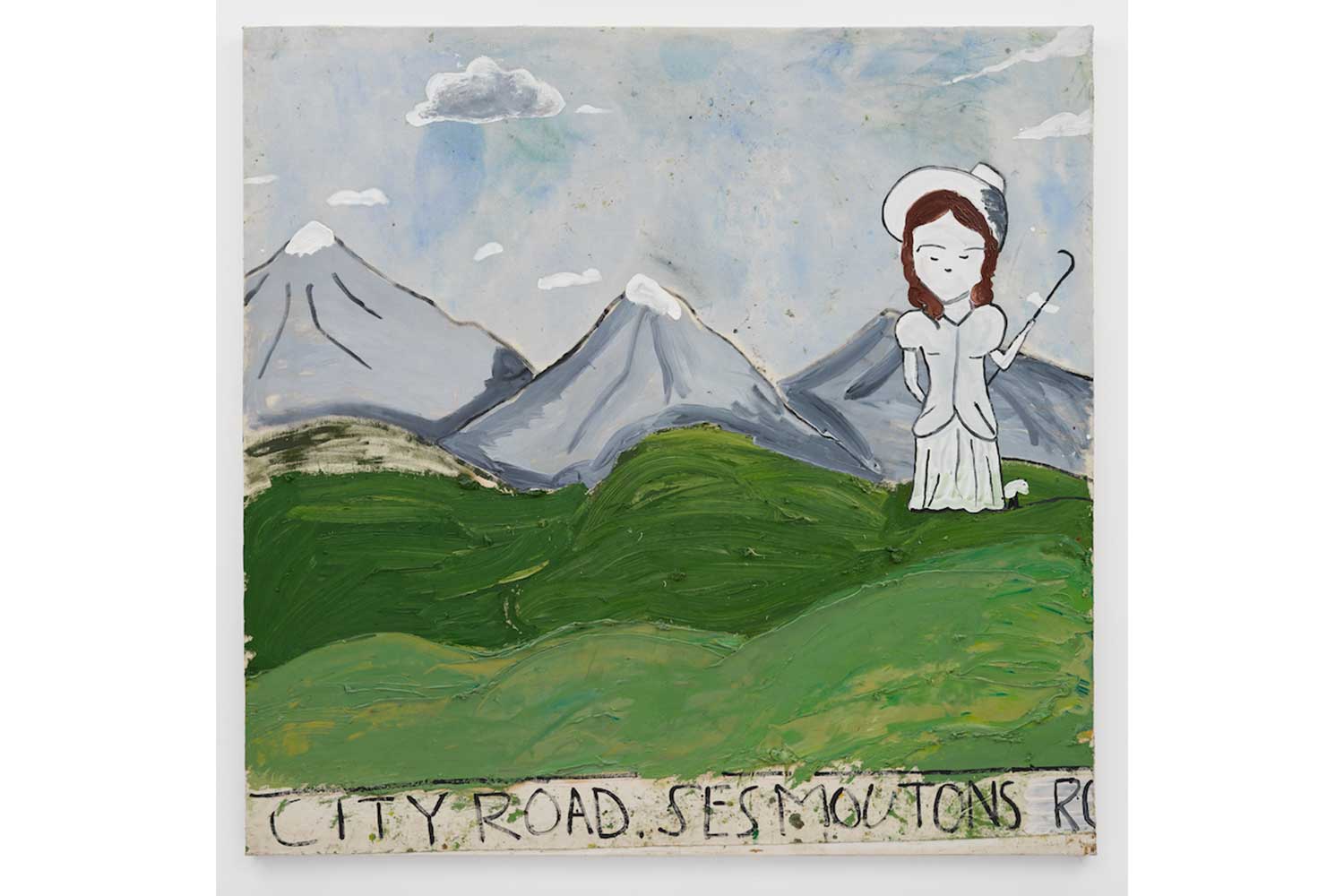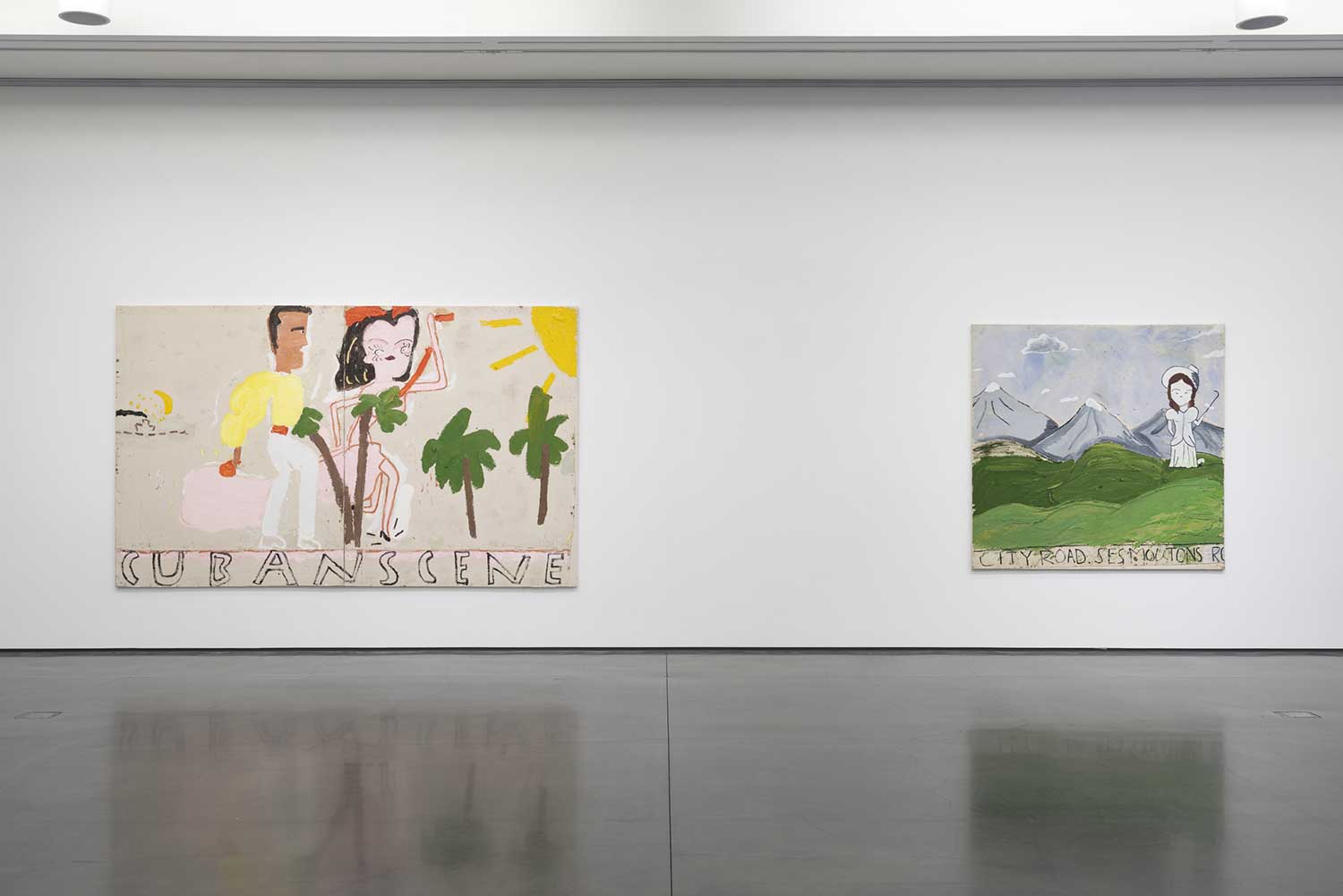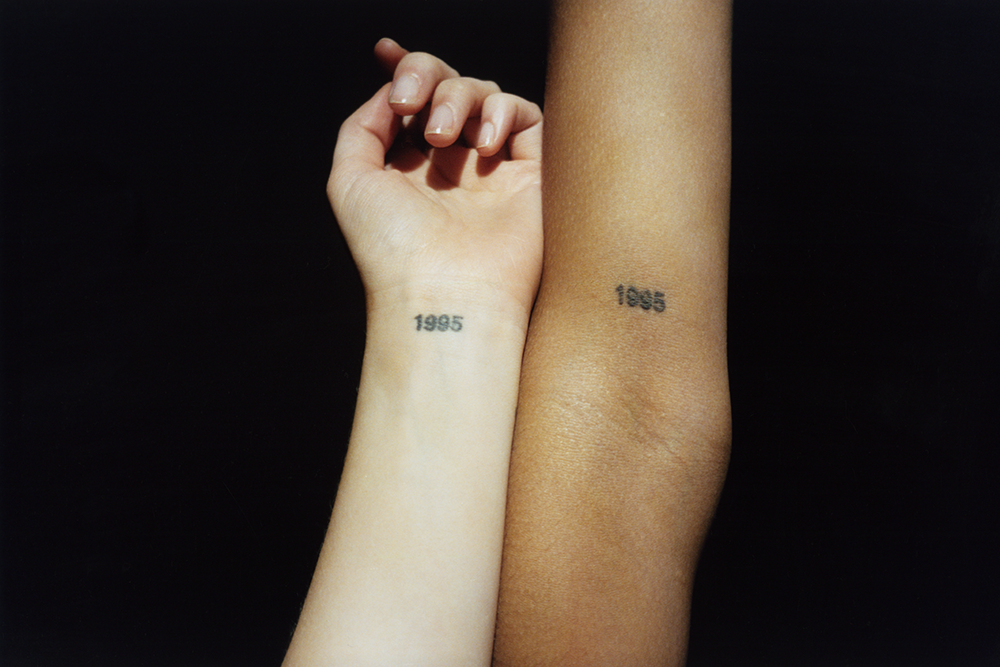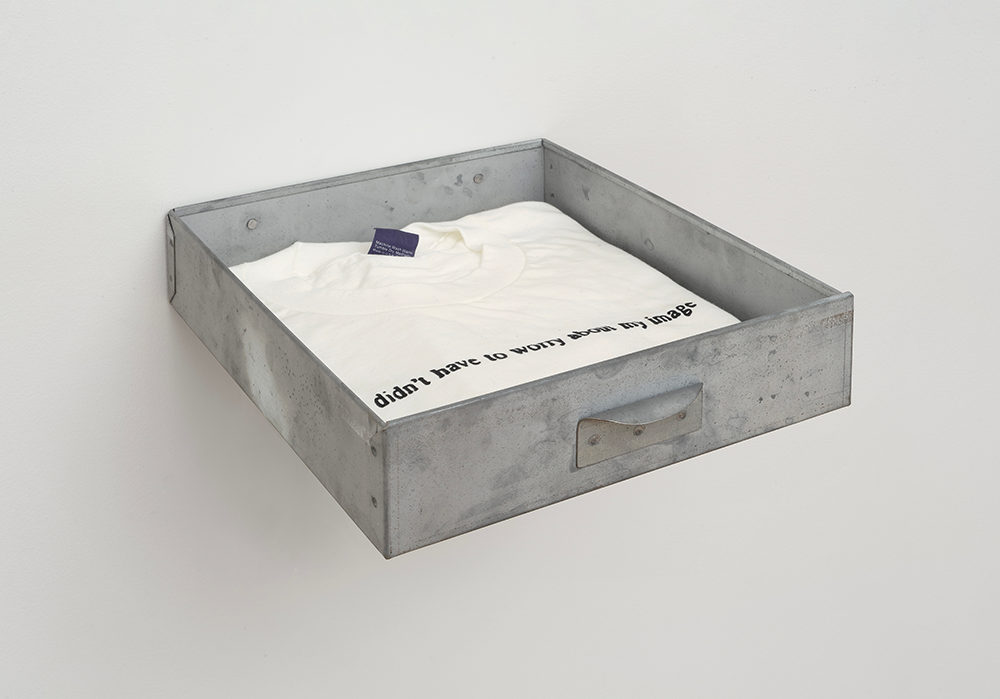The story of British artist Rose Wylie’s career has become something close to lore for its unusual trajectory: despite having been making art for decades, it was only in recent years that she began to receive acclaim for her work, becoming something of an overnight star in her early eighties. Now, at age eighty-six, she makes her United States debut with a one-person exhibition at the Aspen Art Museum in Colorado.
Comprised primarily of fourteen paintings ranging from 1999 to the present day, the exhibition — titled “where i am and was” — cleverly captures the scope of Wylie’s practice through a pared-down presentation in which individual works stand firmly on their own. By condensing the number of paintings on view, the experience of each becomes more intense, leading to a show that is fiercely striking specifically because of its lack of overstimulation.
Wylie is known for her method of drawing upon a wide array of sources (such as newspapers, films, magazines, art history, and advertisements) and from her personal, everyday experiences, which she then weaves into a broader discussion of cultural themes. For example, with Girl in Lights (2015), the artist employs the motif of the reclining female nude — a ubiquitous image in art history — to interrogate the ongoing depiction of women in visual culture at large, thereby tying the popularity of the accumbent naked woman within the art-historical canon to the later prominent image of pin-up models made pervasive in the twentieth century.
This question is again engendered via the 2019 work Serena, one in a series of paintings focused on the celebrated American tennis figure Serena Williams, with whom Wylie is fascinated. Made up of oil on canvas in two parts, the imposing dual-paneled work captures the athlete’s torso in profile while donning a tight one-piece bodysuit known colloquially as a “catsuit.” The painting is based upon a photograph of Williams in a catsuit at the 2018 French Open, which went viral for her fashion choice and sparked a slew of body-shaming comments online.
Serena arguably acts as a response to the negative reaction Williams received for embracing her figure. (When finalizing the painting, Wylie chose to insert an additional strip of canvas between the panels so as to widen the frame to prevent the tennis player from appearing too thin.) As such, one might interpret that Wylie has shifted from challenging the widely accepted, unrealistic image of the female body to staunchly criticizing it.
Though the exhibition technically spans the past twenty-one years, the majority of the paintings were produced during or after 2015, with only a single work, City Road, coming from 1999. Taking its title from the name of a busy thoroughfare in central London, the painting depicts Little Bo Peep atop a hilly landscape, which Wylie used after spotting a portrayal of the fictional shepherdess in a cafe window on City Road. The titular words are scrawled along the bottom of the canvas, next to the French “ses moutons,” meaning “her sheep.”
While the painting contains the artist’s signature devices — the image of the glorified woman, and the incorporation of text within the composition — it is perhaps the weakest in the show, appearing to arrive short of completing a fleshed-out circle of thought. That is not, however, to say it is defective. Rather, City Road plays an interesting role in the exhibition overall, serving as a symbol of Wylie’s earlier work and thereby demonstrating significant growth in her practice in the two decades since.
Also on view are works on paper, sketches, and ephemera, which are housed in vitrines and provide more extensive context for the paintings and background on the artist herself in an already deeply affective show. One leaves with the sense of knowing the artist personally, and having witnessed her thought process at work. By presenting a gathering of paintings that skew heavily toward recent years, but also including City Road along with preparatory drawings and materials, the exhibition, per its title, seems to be less “where i was” than “where i am.” And, given the strength of the work in the show and stardom that followed, one can deduce that where Wylie is might just be exactly where she should be.


